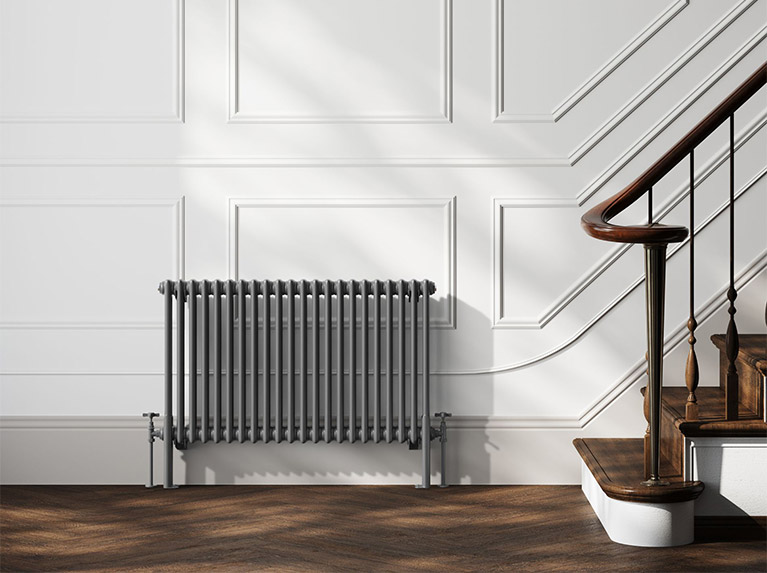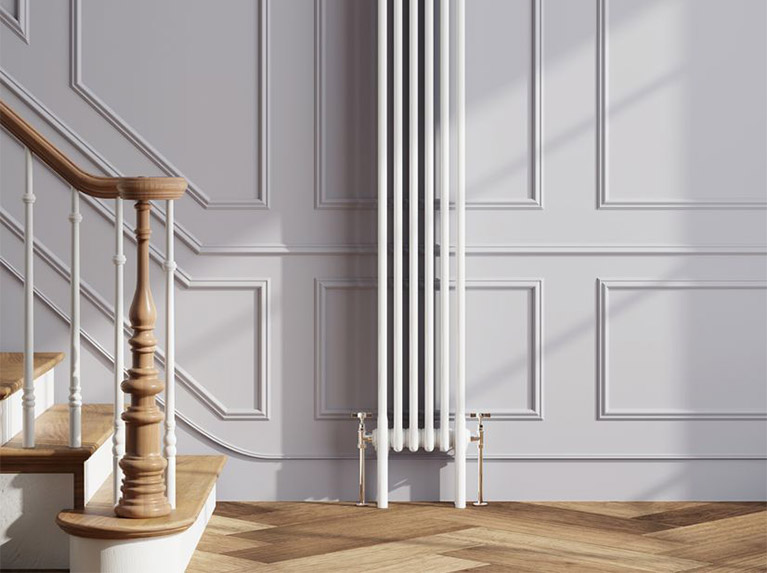What Are Radiator Valves?
Valves are used to control the temperature of the radiator; a little bit like taps, they can be turned on and off to achieve the desired level of heat.
They always come in pairs: one to control the temperature and adjust the amount of water entering the radiator, and the other to balance the system by regulating the heat that is expelled.
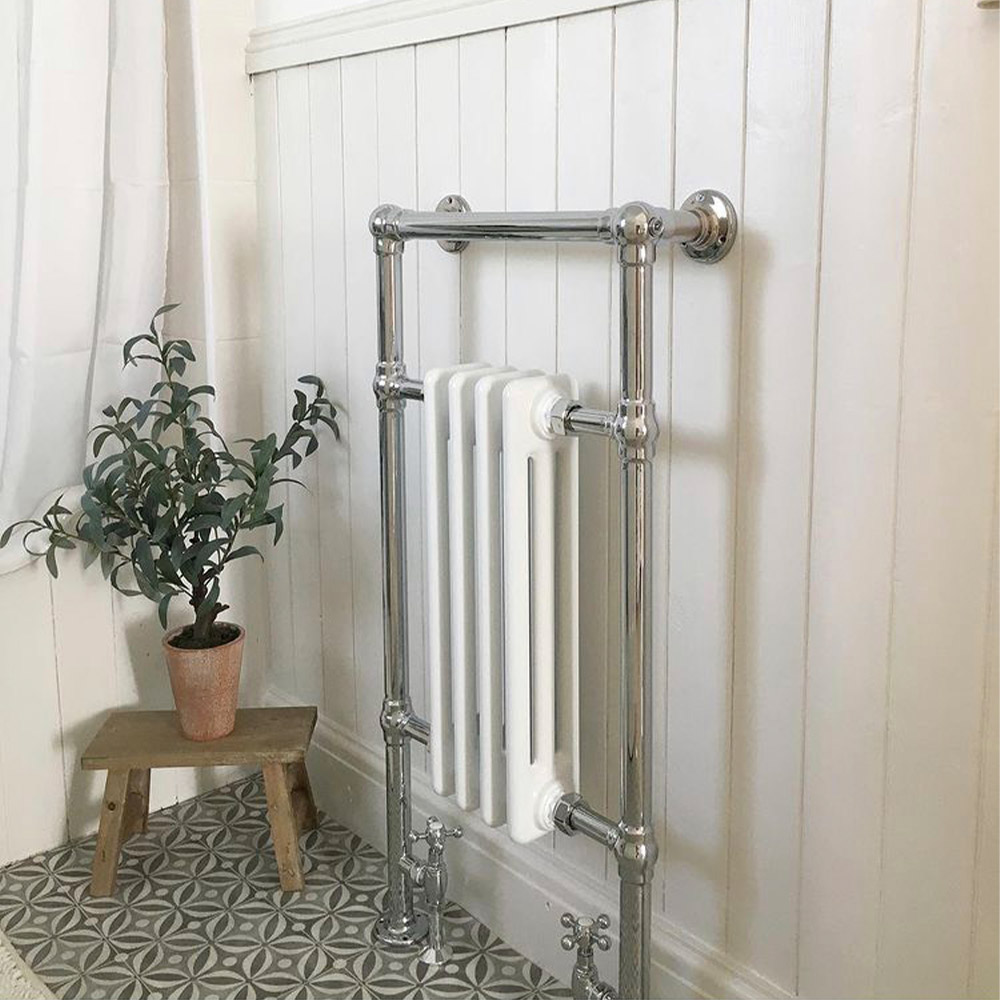
Above, @mayfield_blossom uses our Gibraltar Small White Traditional Heated Towel Radiator with our Chrome Angled Traditional Manual Radiator Valves Standard 15mm.
Why Don’t Radiators Come With Valves?
Simply because everyone has different requirements.
Taste, pipework and the placement of the radiator are all factors that need to be considered when looking for valves, so it is important for you to shop around for them yourself.
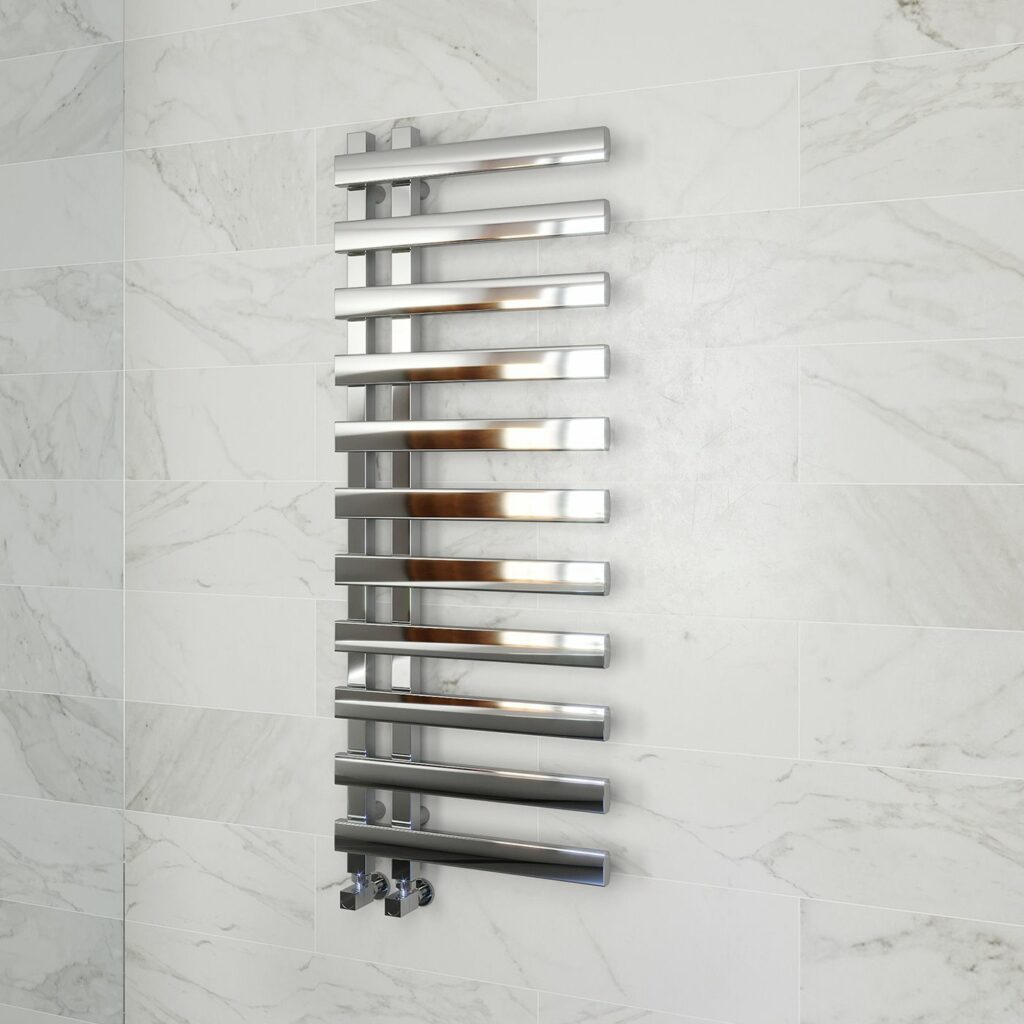
Above, our Palermo Chrome Designer Heated Towel Rail 1200x450mm with our Chrome Square Angled Manual Radiator Valves (Pair) Standard 15mm.
How Do I Know Which Valves I Need To Buy?
Firstly, you will need to figure out where the inlets are located
The inlets are what connect your radiator to the pipework in your house, and they are most commonly found at the bottom on either side.
Some radiators have inlets at the back, meaning that they come through the floor rather than the side, and some modern radiators may feature middle connection inlets, which can be found in the centre at the bottom.
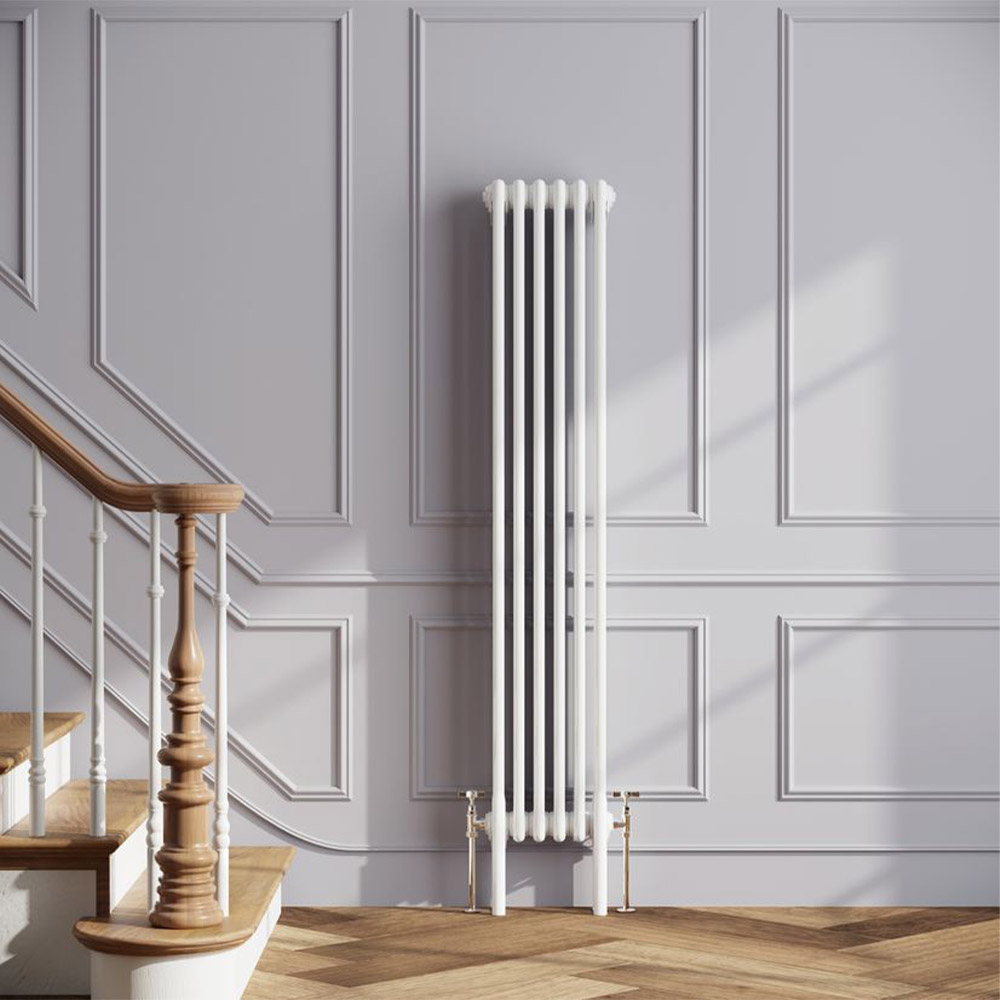
Above, our Athens White Triple Column Vertical Traditional Radiator 1500x290mm with our Chrome Angled Traditional Manual Radiator Valves (Pair) Standard 15mm – inlets are located at the side.
Then, you need to consider the type of valve you need…
Manual Radiator Valves
Manual valves are the most common type to use for your radiator, as they can be turned on and off to adjust the temperature. Simply designed, however, these valves could lead to a higher heating bill if you don’t keep your eye on the temperature!

Above, from left to right Anthracite Angled Traditional Valves, Chrome Angled Traditional Manual Valves & Chrome Square Straight Manual Valve.
Thermostatic Radiator Valves (TRV)
Thermostatic radiator valves, or TRV, allow for easy adjustment of heat output, helping to save you money when used correctly by reducing the unnecessary expulsion of heat. They work by adjusting to the temperature of the room, self-regulating when it gets too hot or cold.
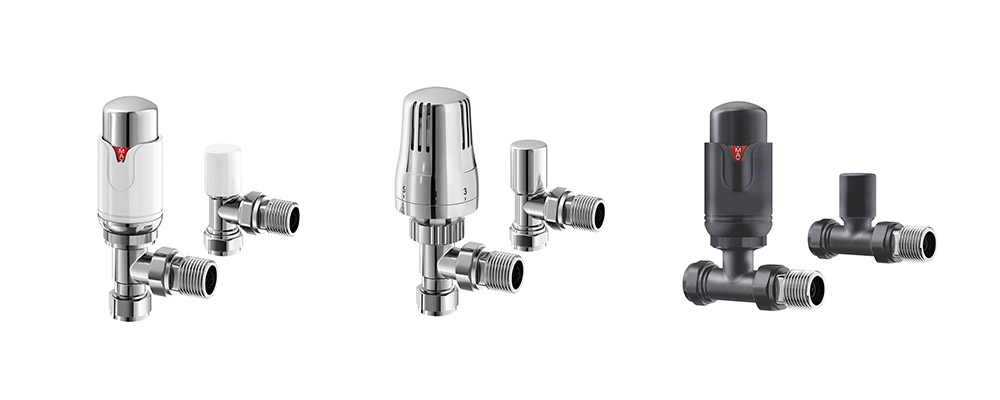
Above, from left to right Thermostatic Angled Valve, Chrome Thermostatic Valve & Anthracite Thermostatic Valve.
The angle…
Straight Valves
Usually connecting from the floor, straight valves have no bends or curves and connect to underside inlets.
Angled Valves
If your pipe work comes from the floor or the wall, and your inlets are at the side, then angled valves are probably the best way to go. At a 90 degree angle, these valves go at the bottom of the radiator and usually protrude from the wall.
Corner Valves
As above, corner valves can be used when the inlets are at the side, and the pipework is coming from the wall or floor. The heads of the valves will sit upright at the top, so that they are not protruding out into the room, allowing for a neater look and posing less of a trip hazard than angled valves.
H-block Valves
Easier to install, replace and remove than other valves, h-block radiator valves take away the need to leave space at either end of the appliance. A stylish and convenient option, they can be used on central connection radiators or heated towel rails.
Below, our Black Traditional 8 Column Towel Radiator with our Chrome Angled Valves.
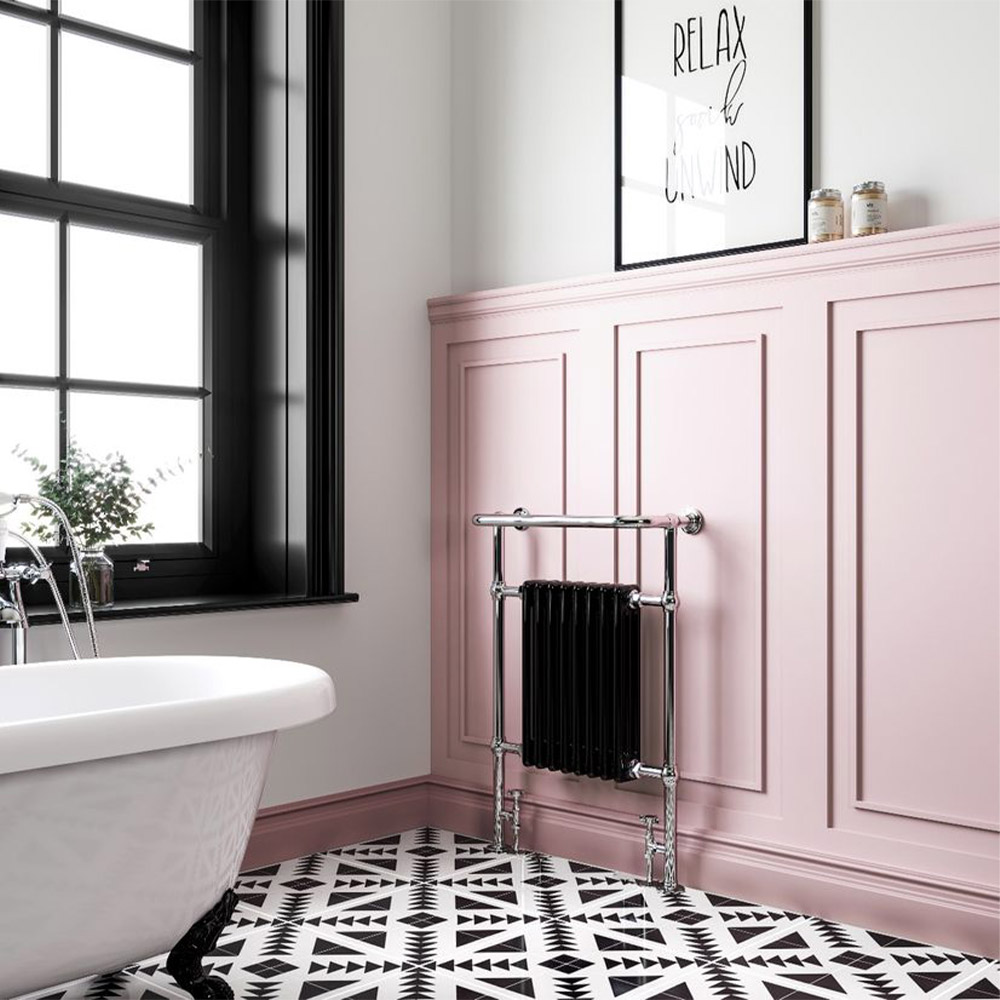
And the size…
15mm Valves
Most houses will require a 15mm valve for the radiators, as this is the standard pipe size in the UK, however, it is always good to check as there is a range of sizes available.
22mm Valves
Wider pipes may have been used if a radiator’s position meant that it needed a greater flow of water running to it; you may find that you need to use these in a bathroom, as wider pipes allow a greater flow of water from the hot water tank.
10mm Valves
It is uncommon for an entire house to have 10mm pipes, but these valves might be needed if a single radiator was added into your existing heating system, such as inside a conservatory.
8mm Valves
Common for houses that were built in the mid to late 20th century, 8 mm valves are used for microbore pipes which are, unfortunately, more susceptible to blockages and kinks in the pipe.
Below, @homewithelizabeth uses our Gibraltar Small White Traditional Heated Towel Radiator with our Chrome Angled Traditional Manual Radiator Valves Standard 15mm.
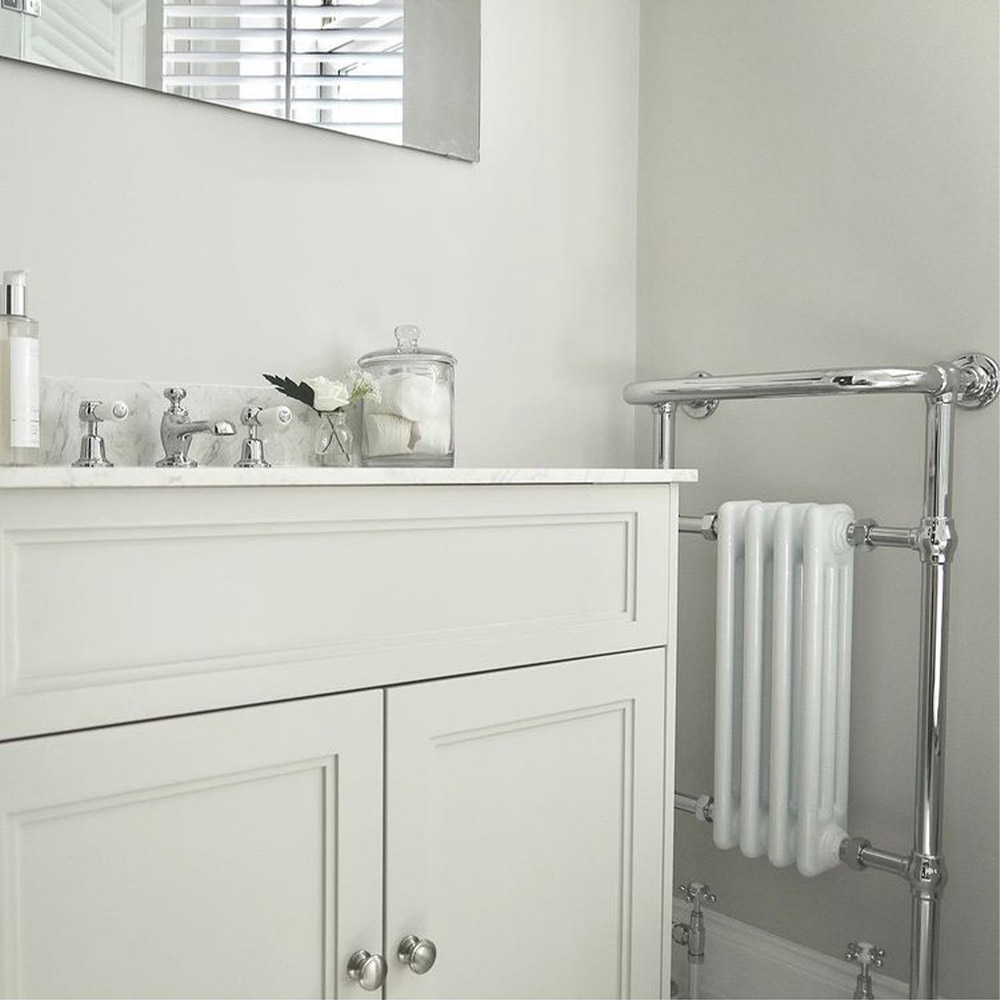
Finally, once you know all of the technical stuff, you can look for which valves suit your style!





